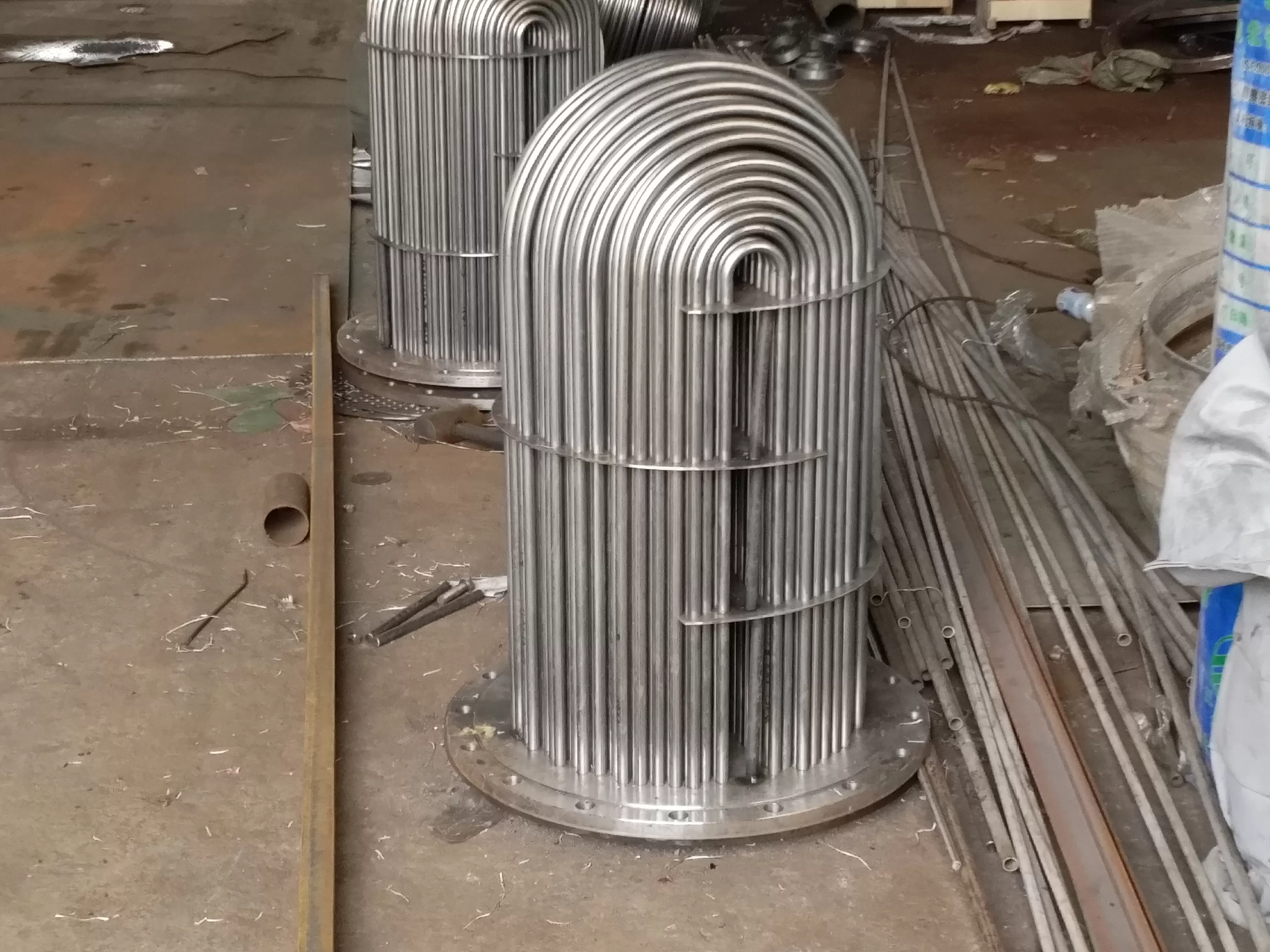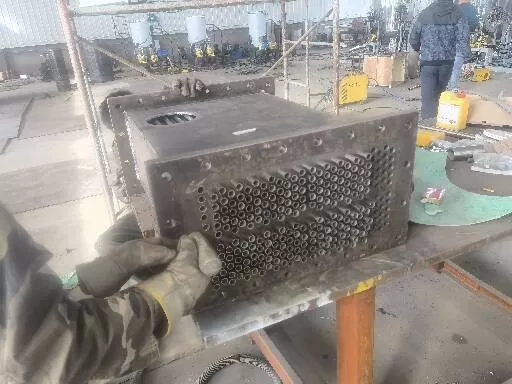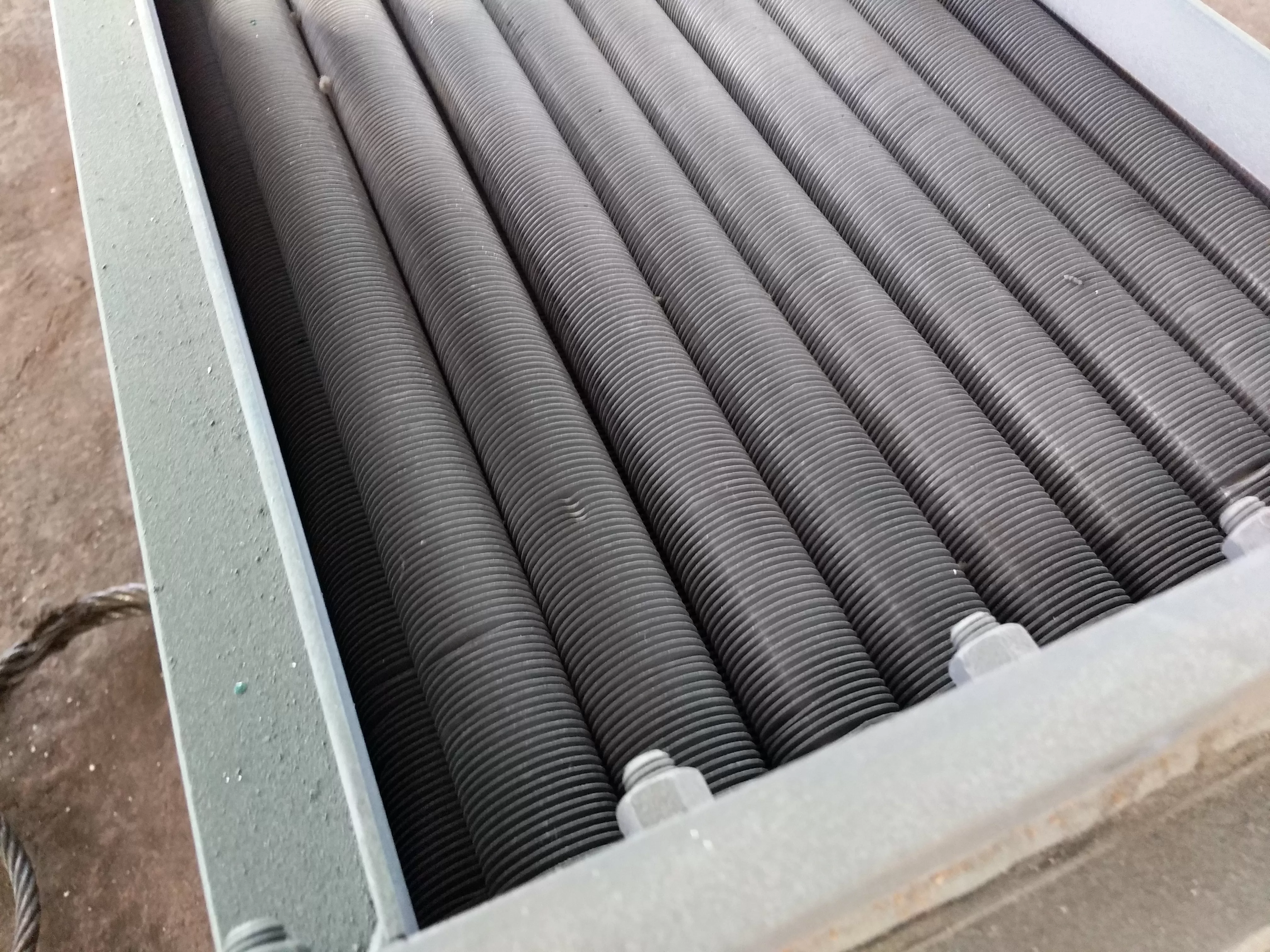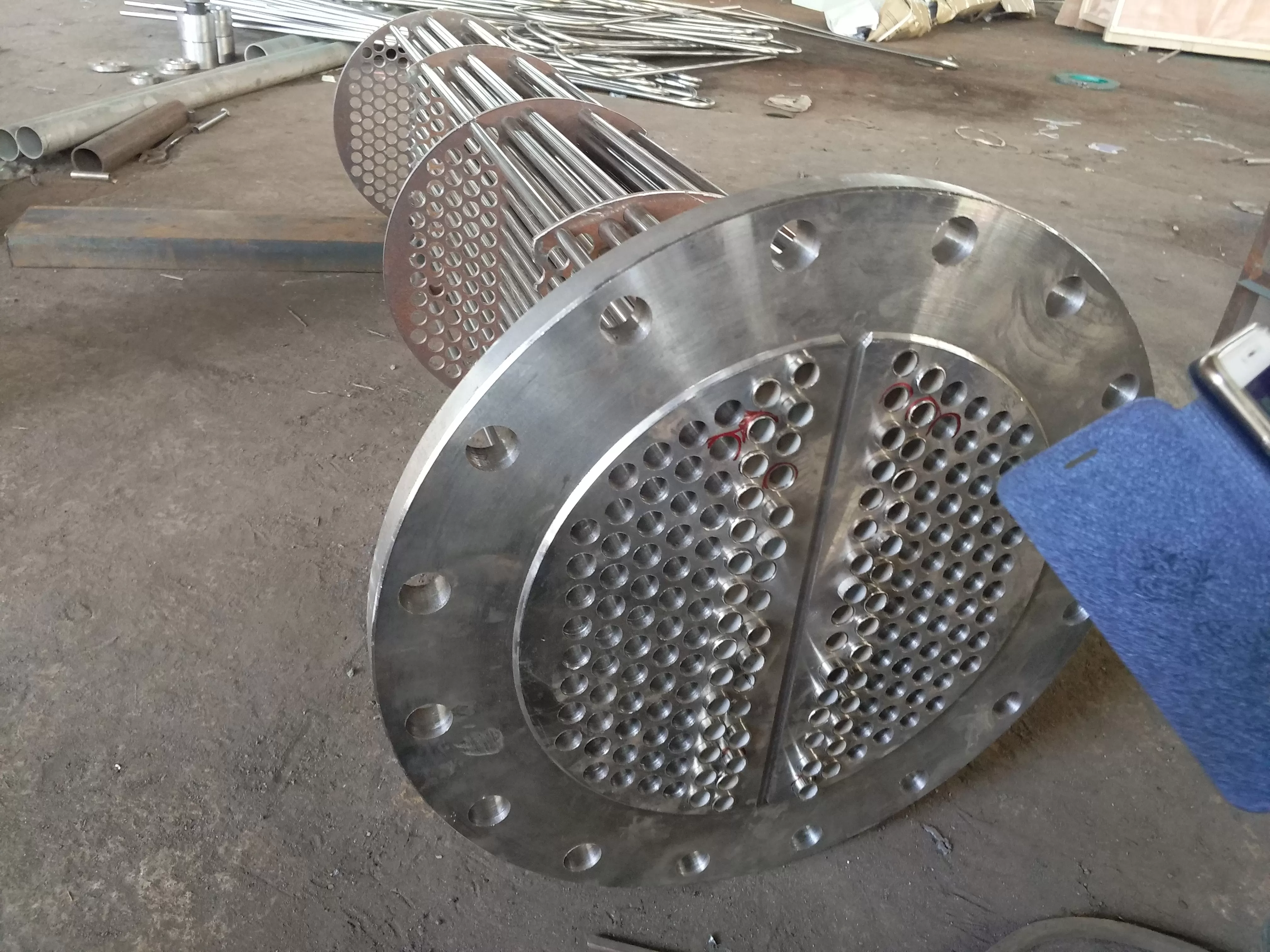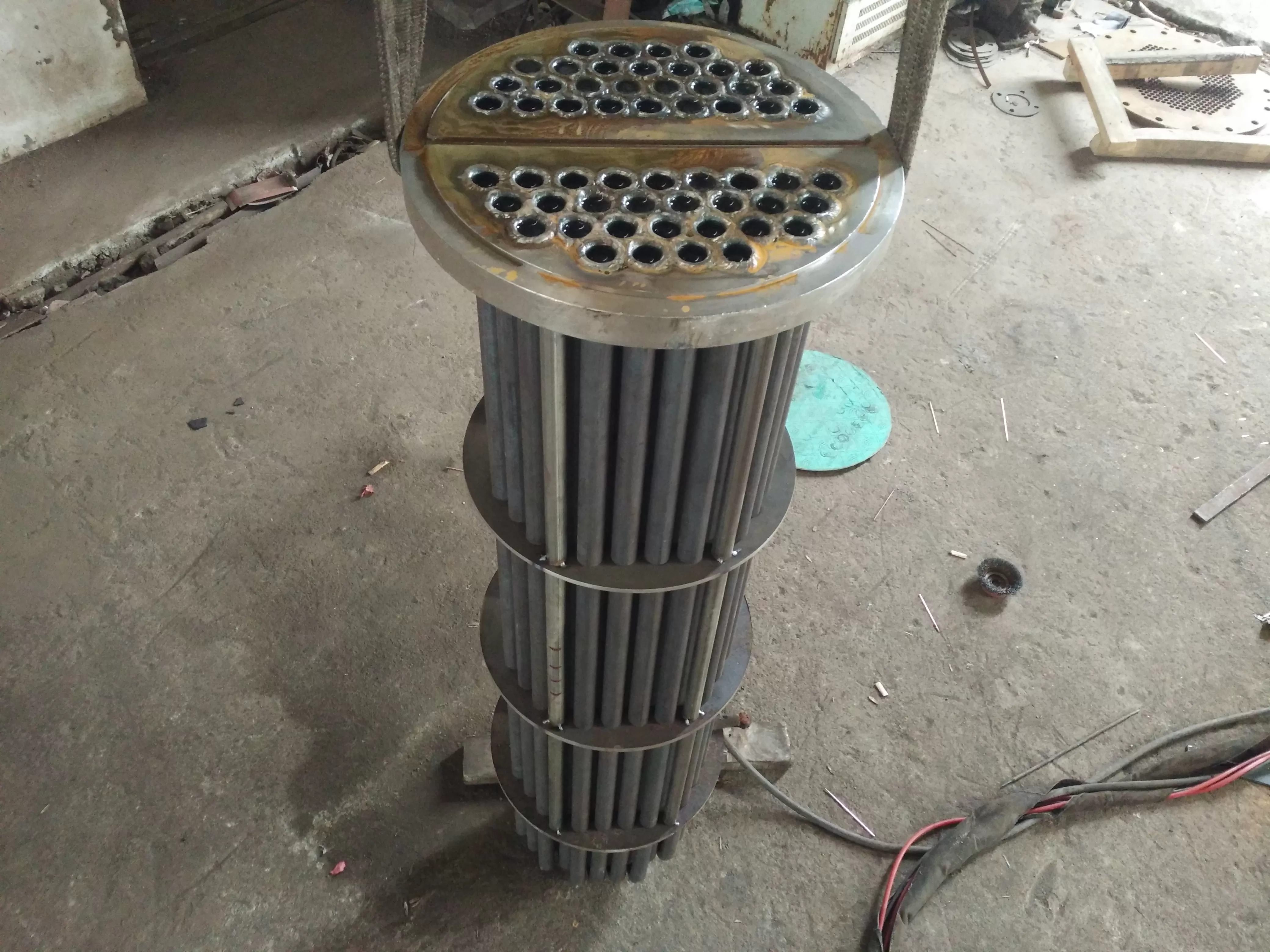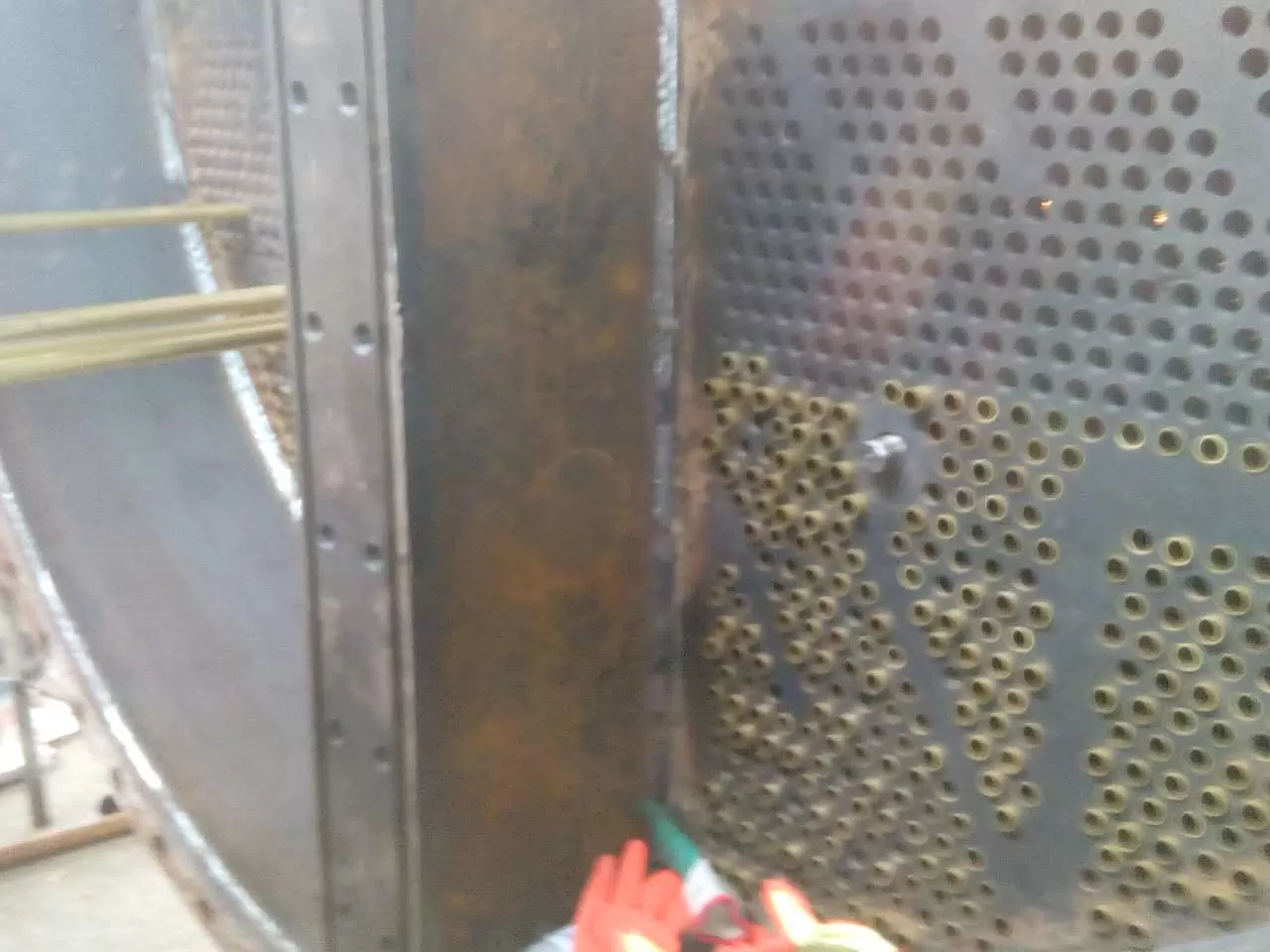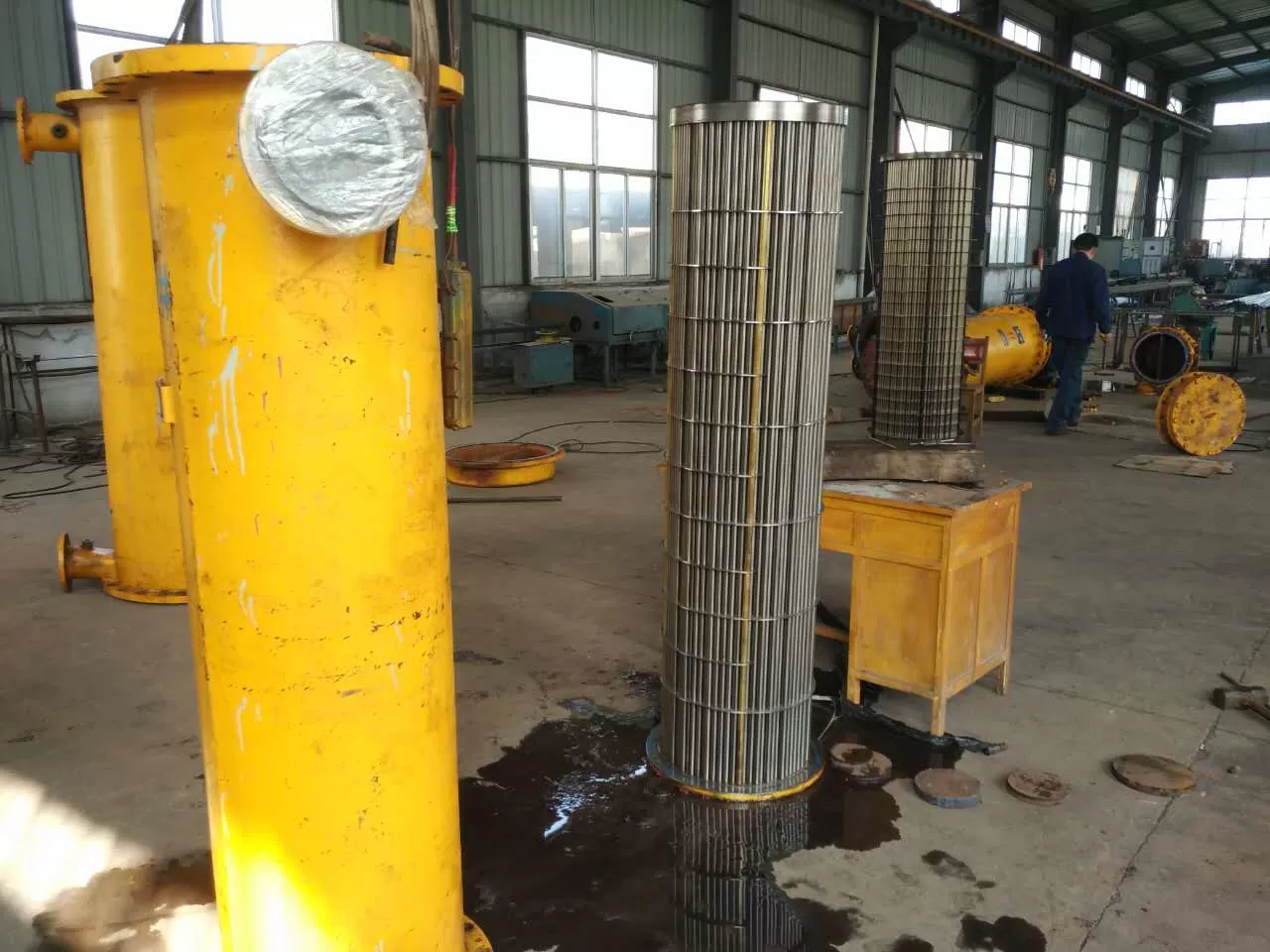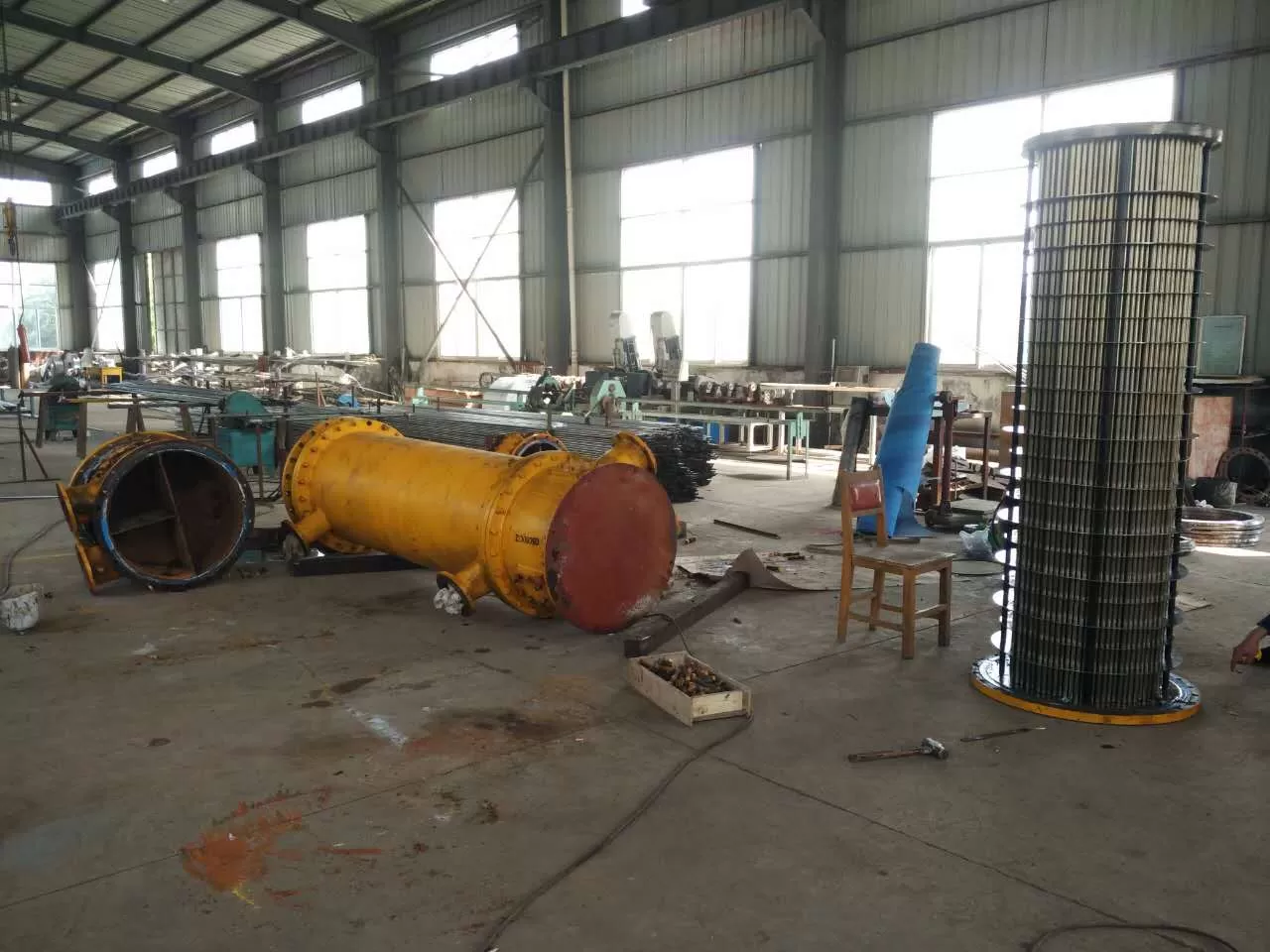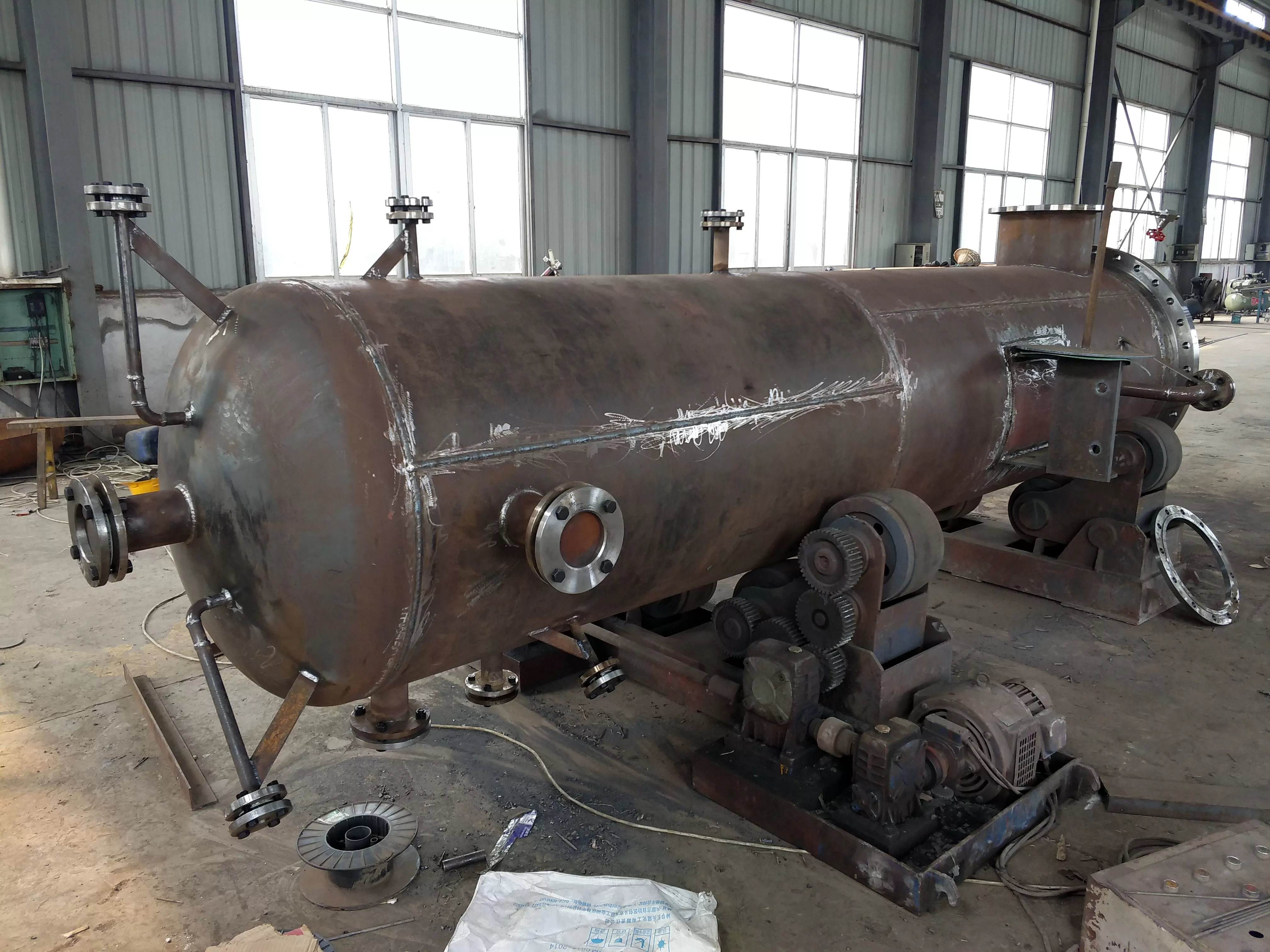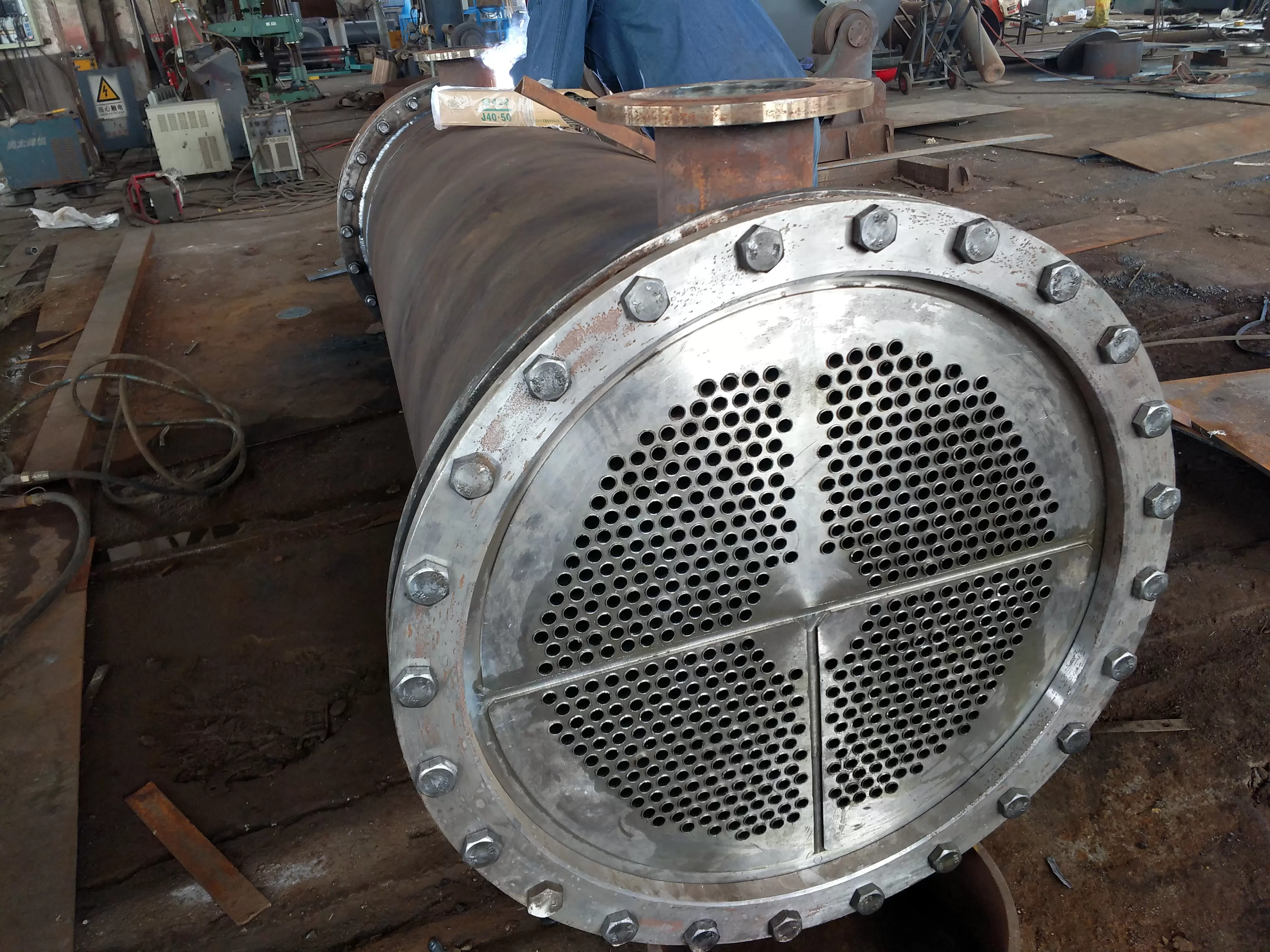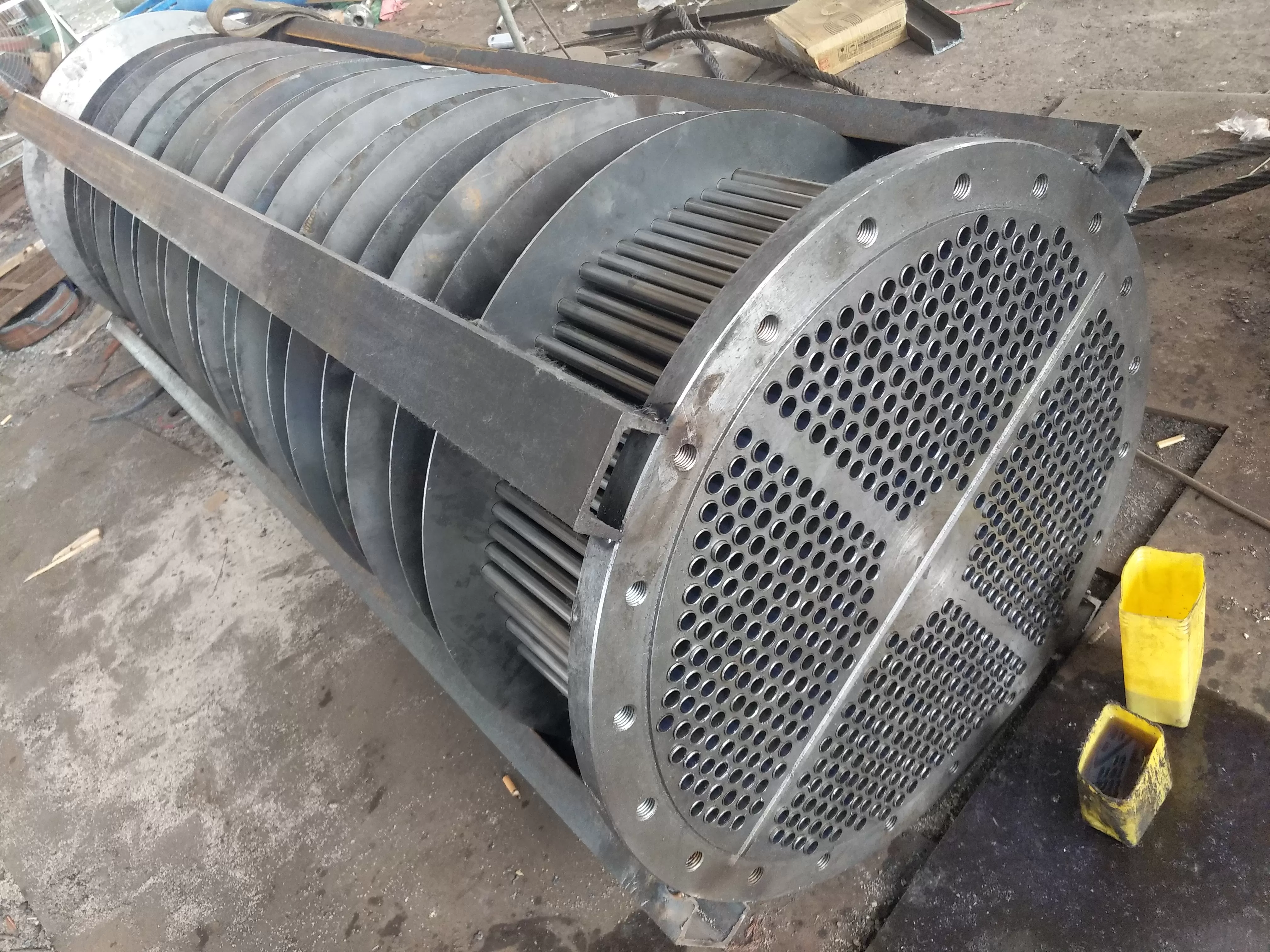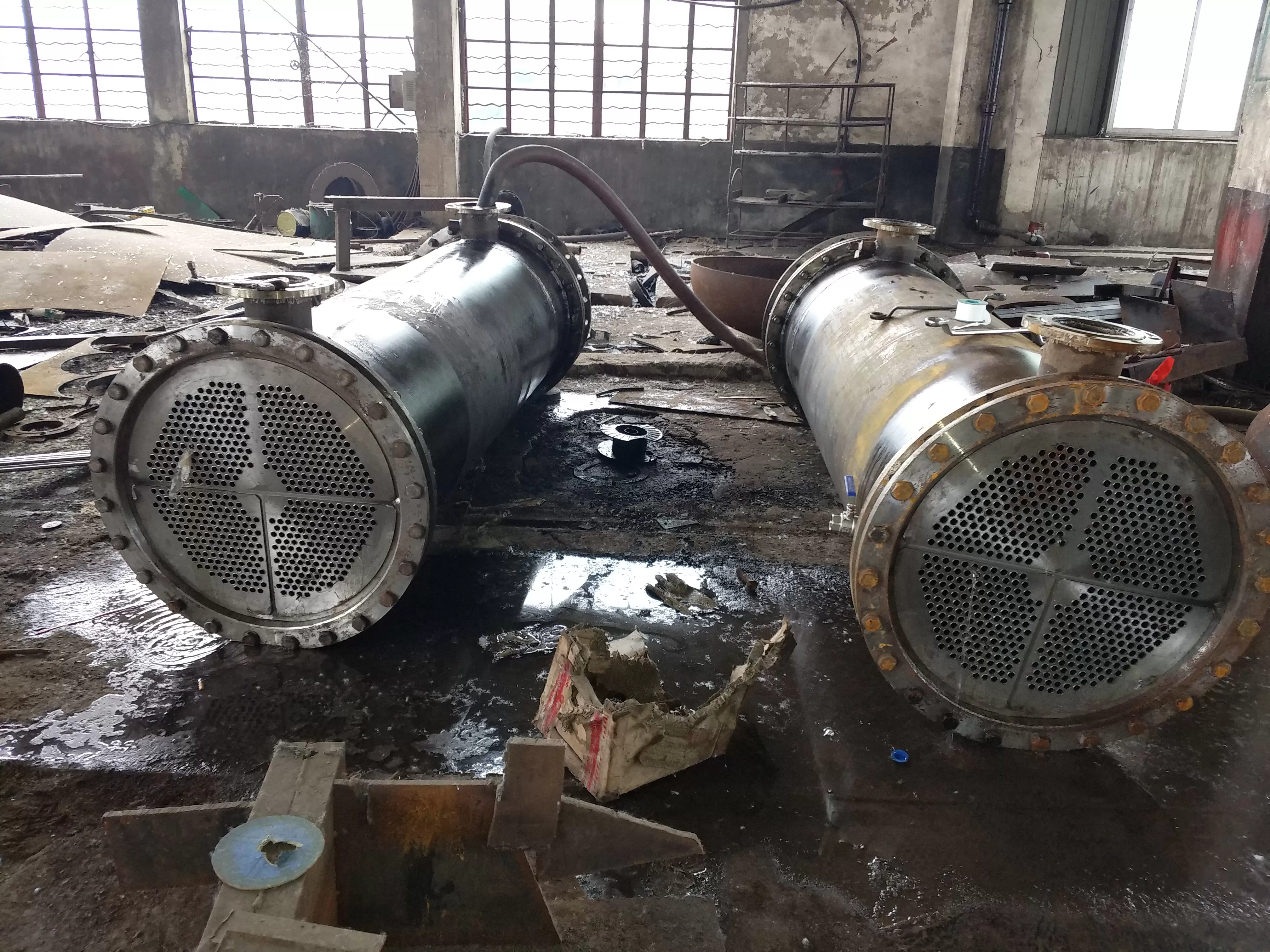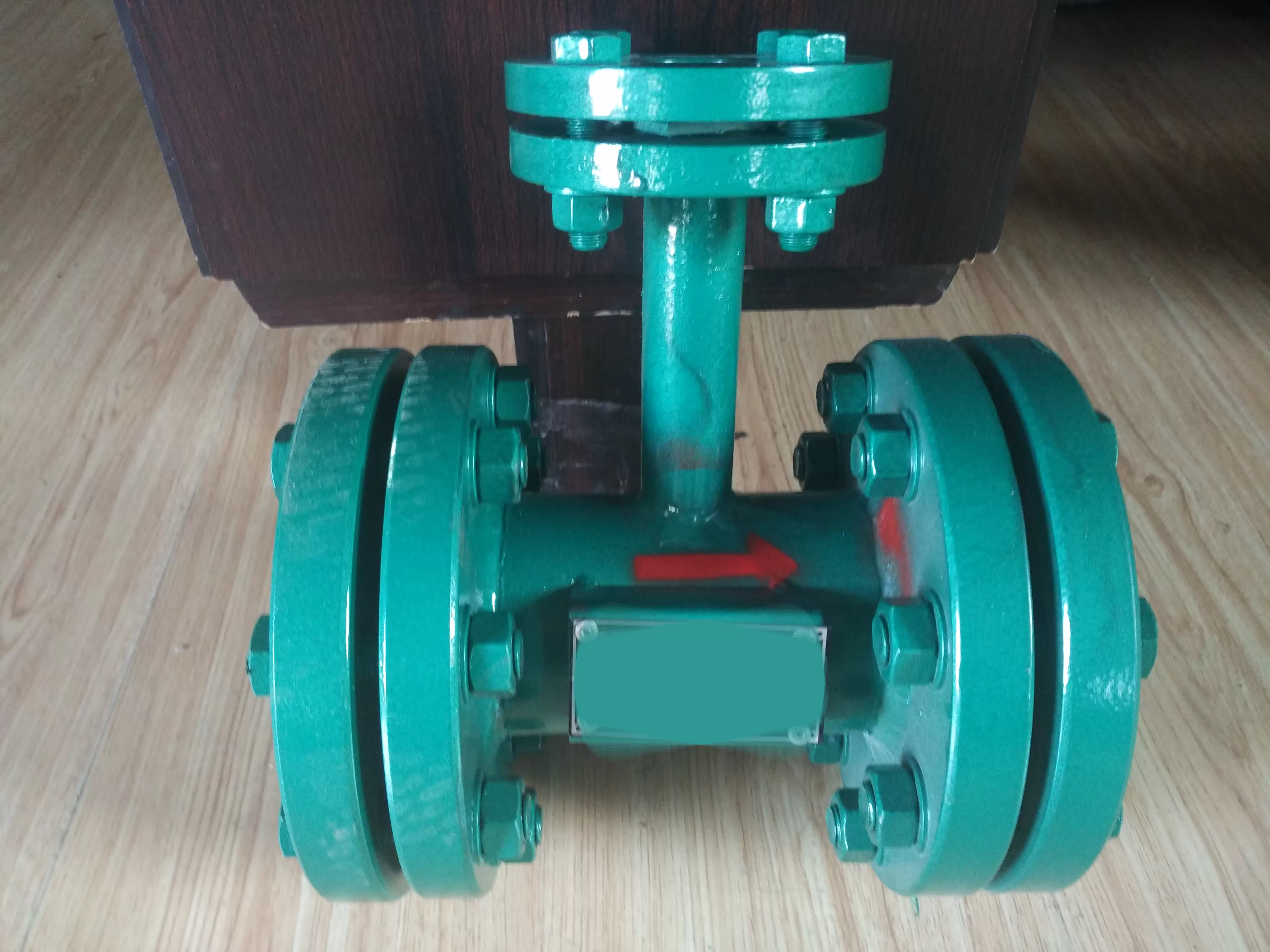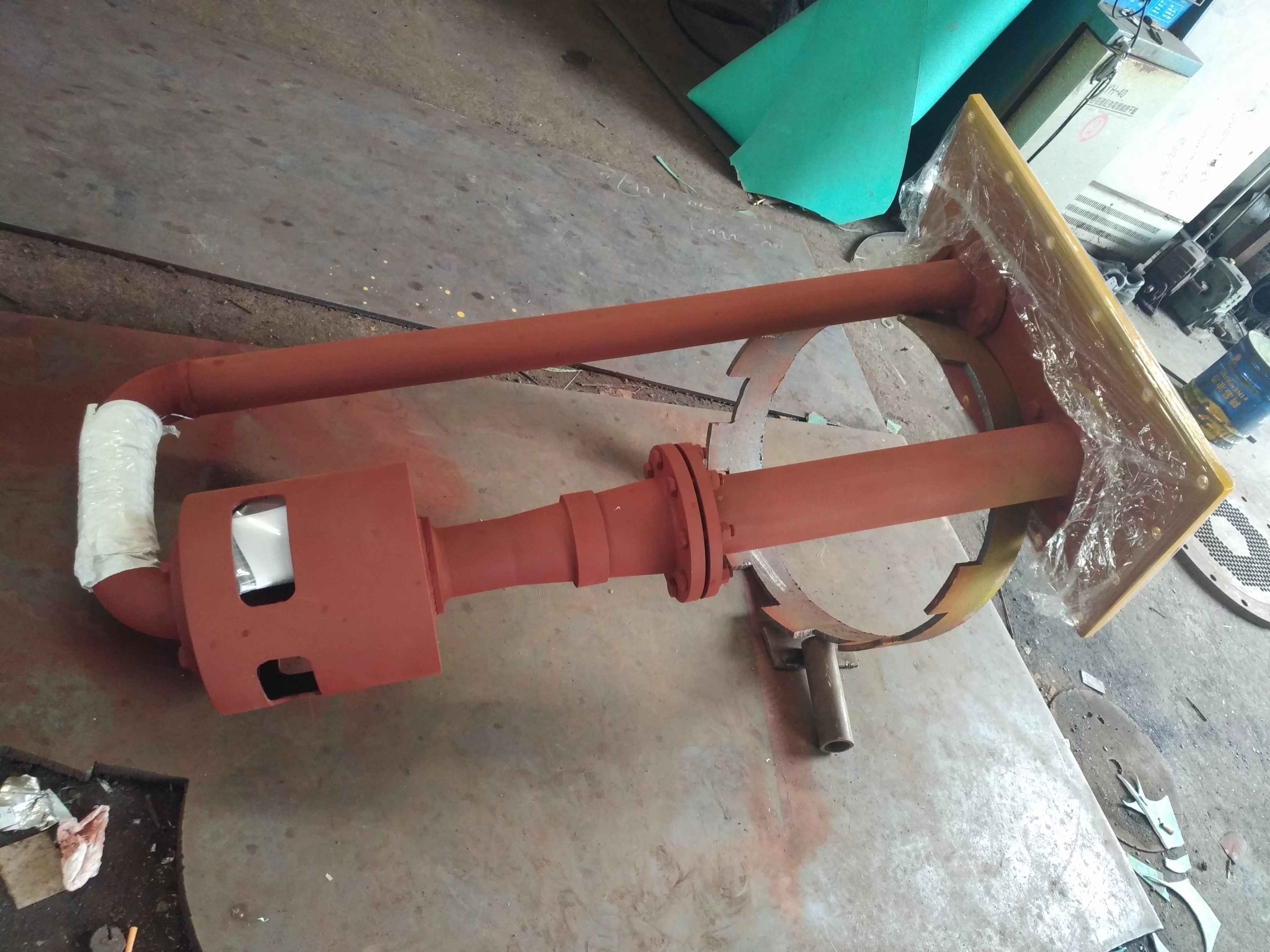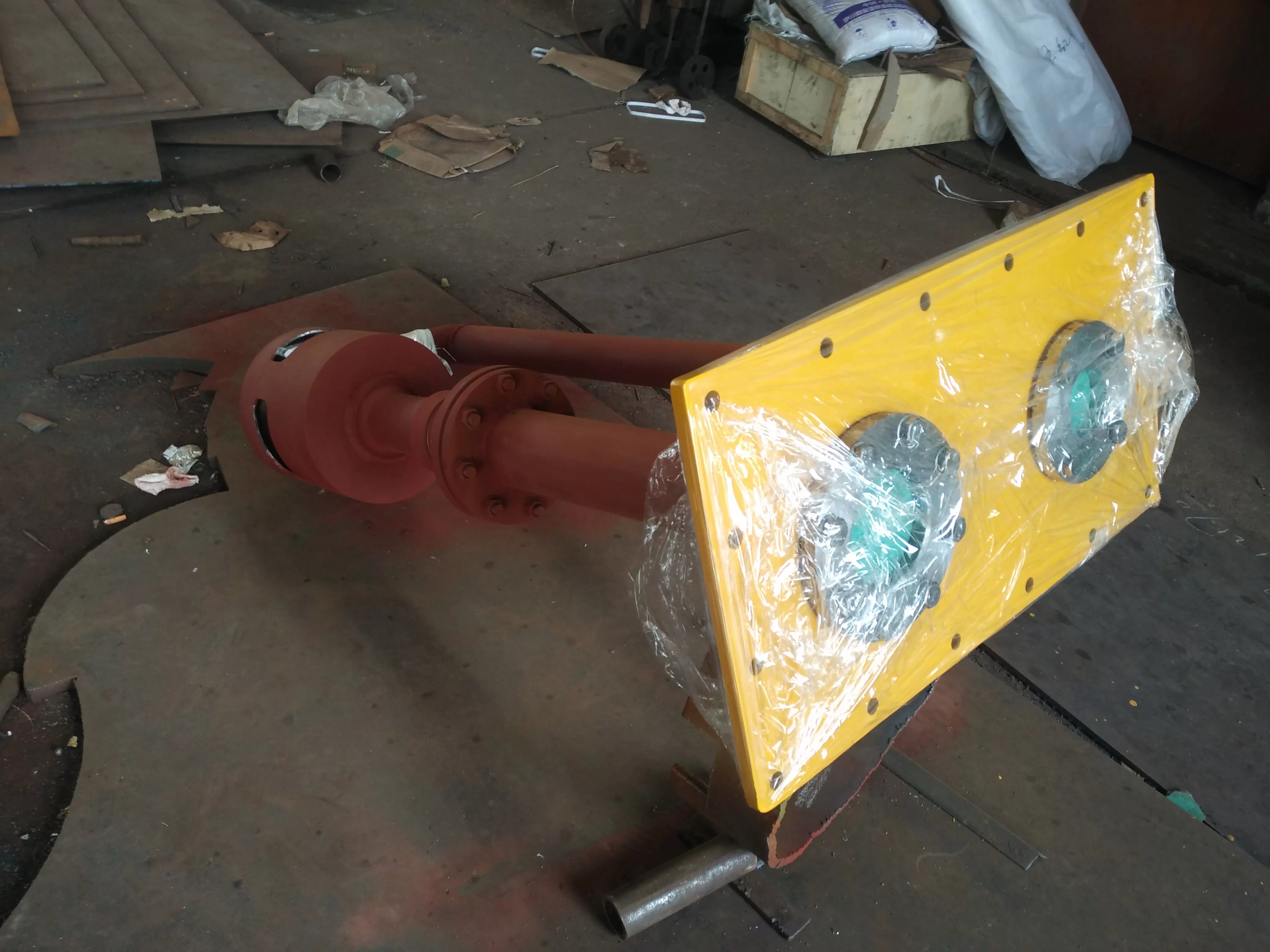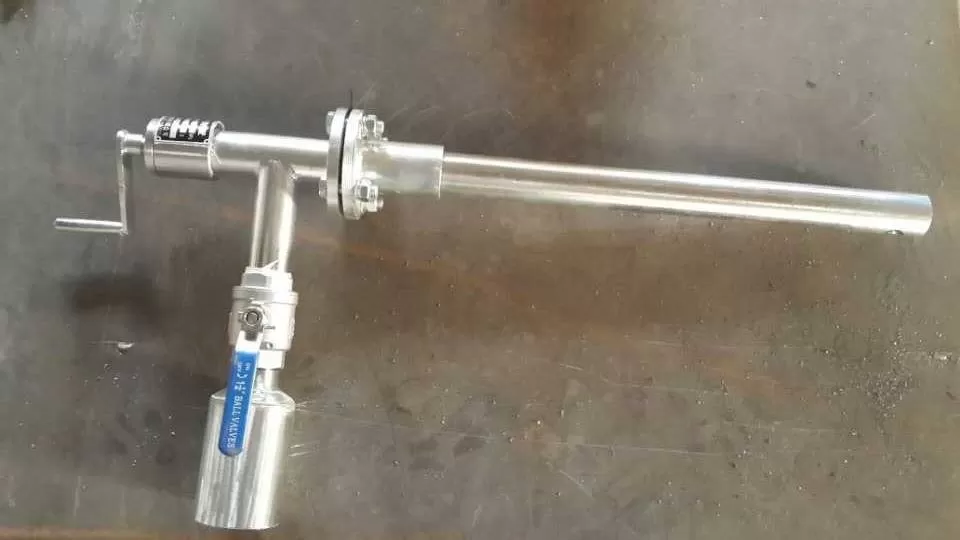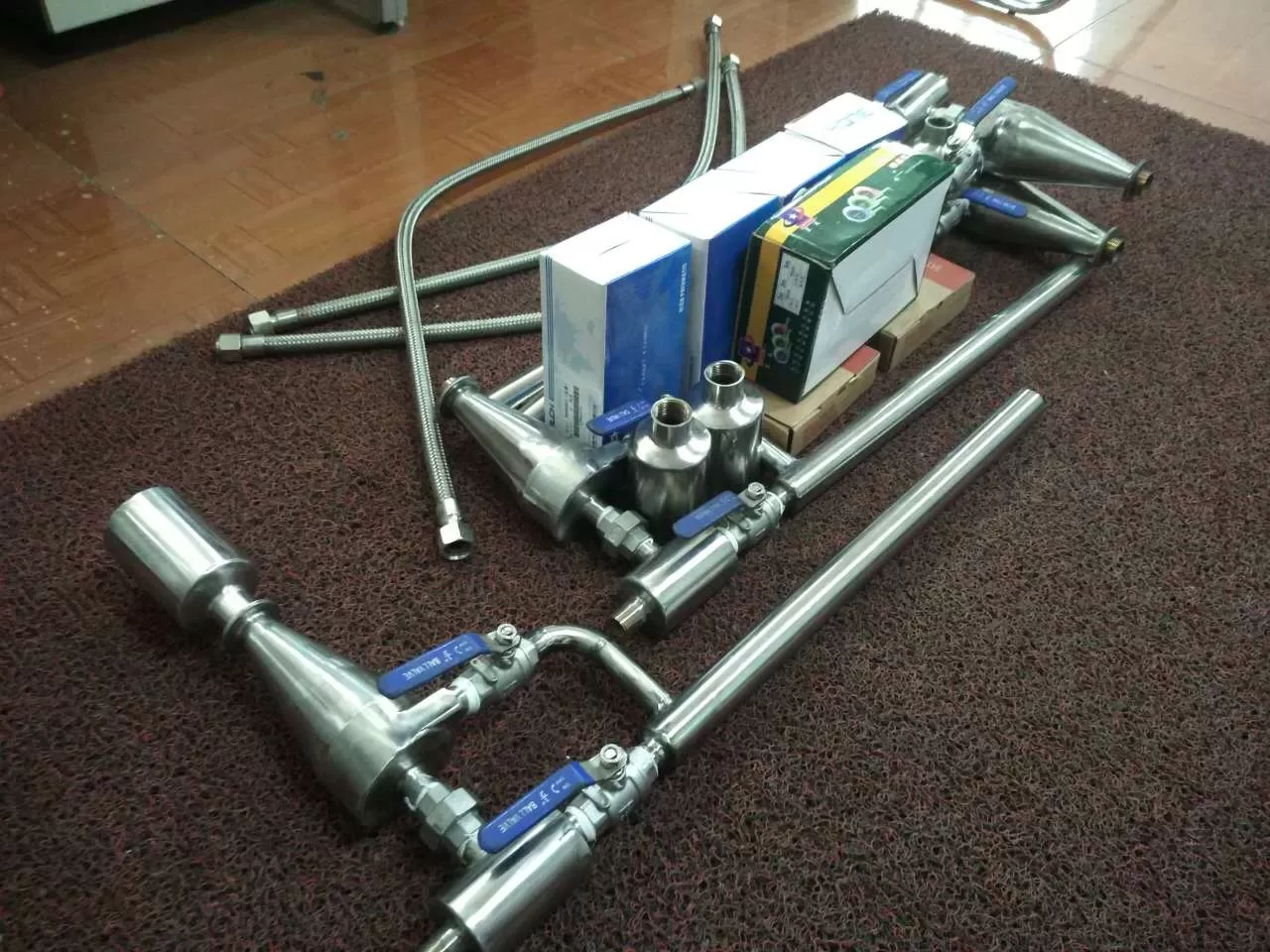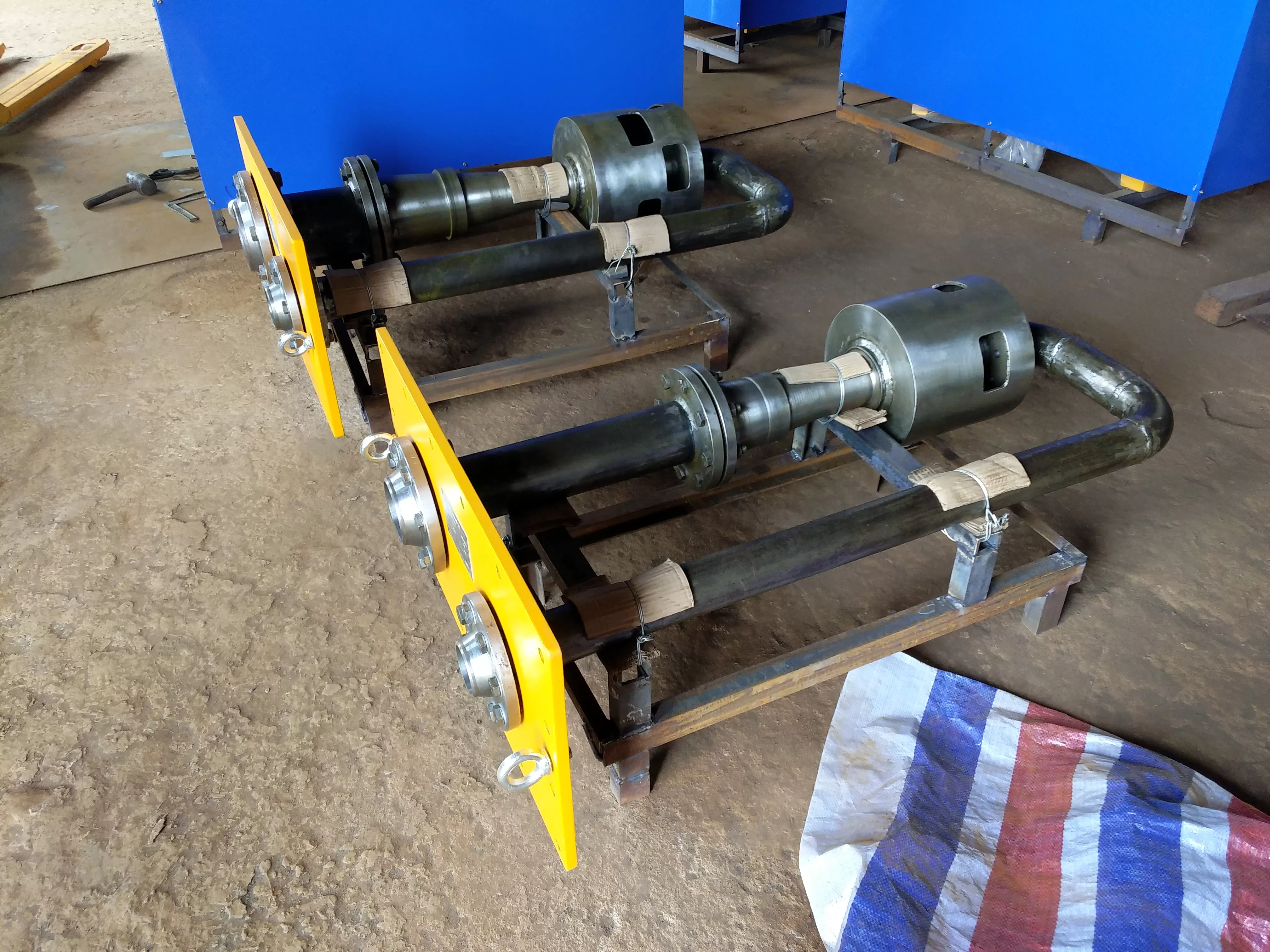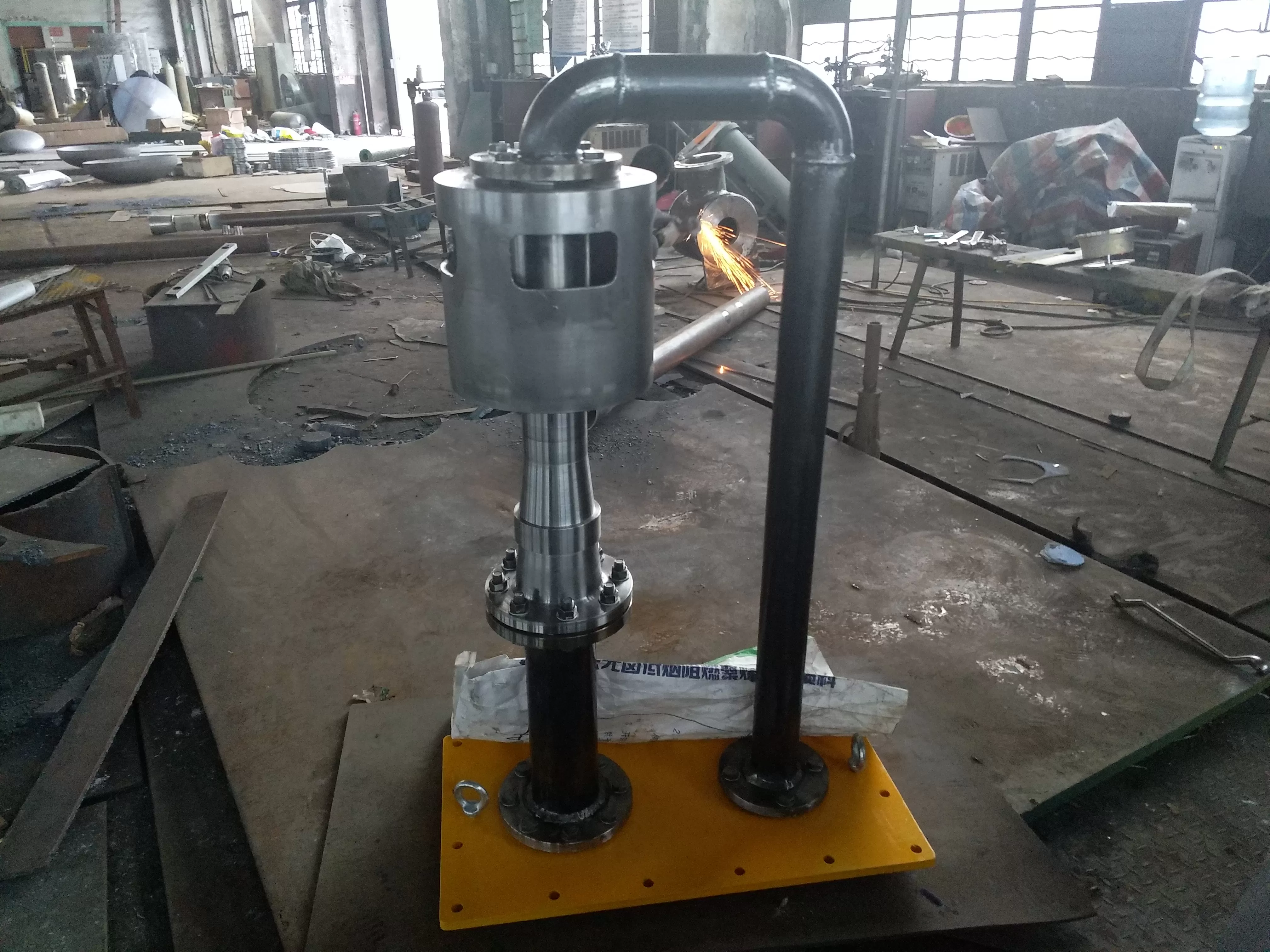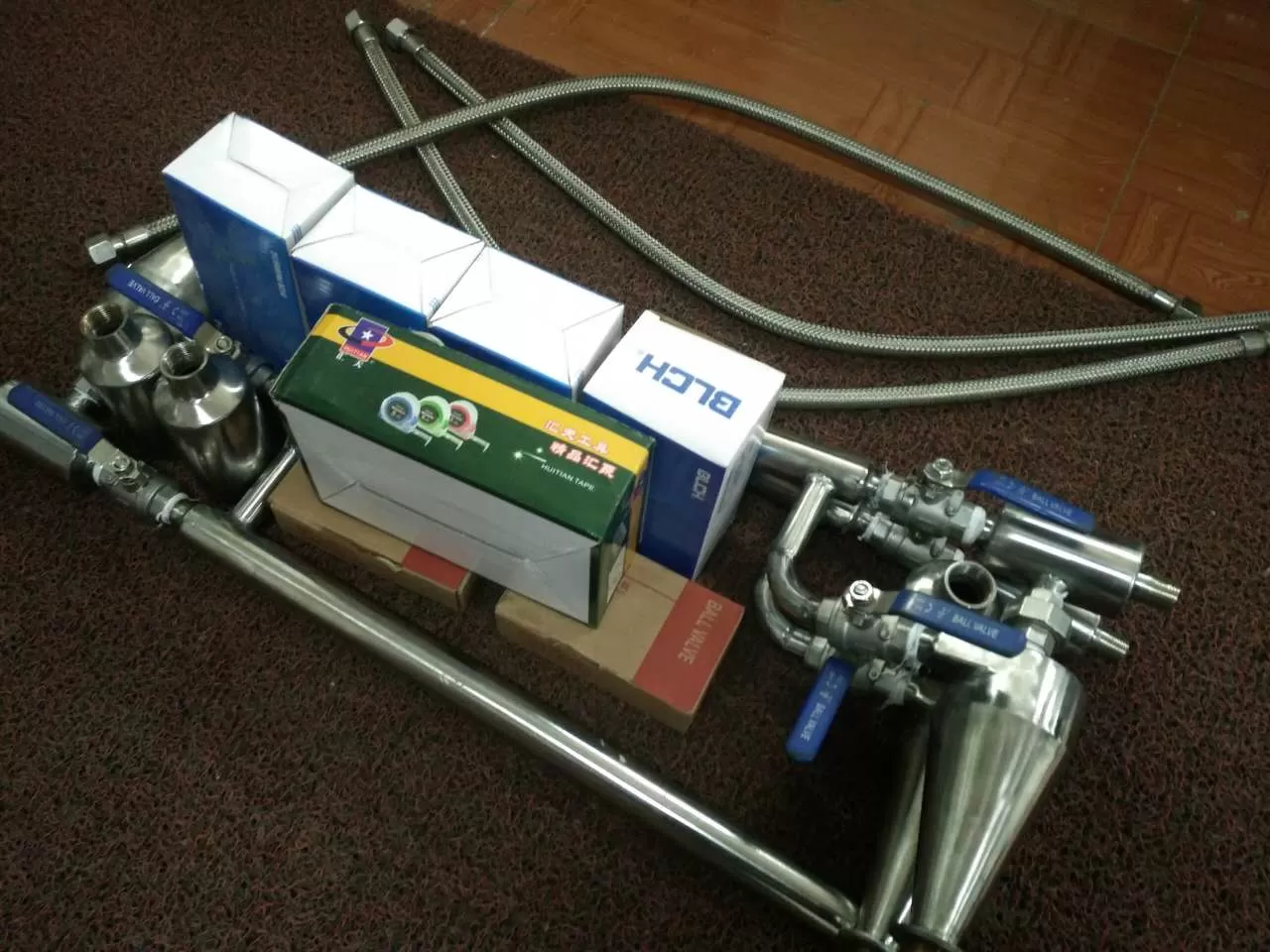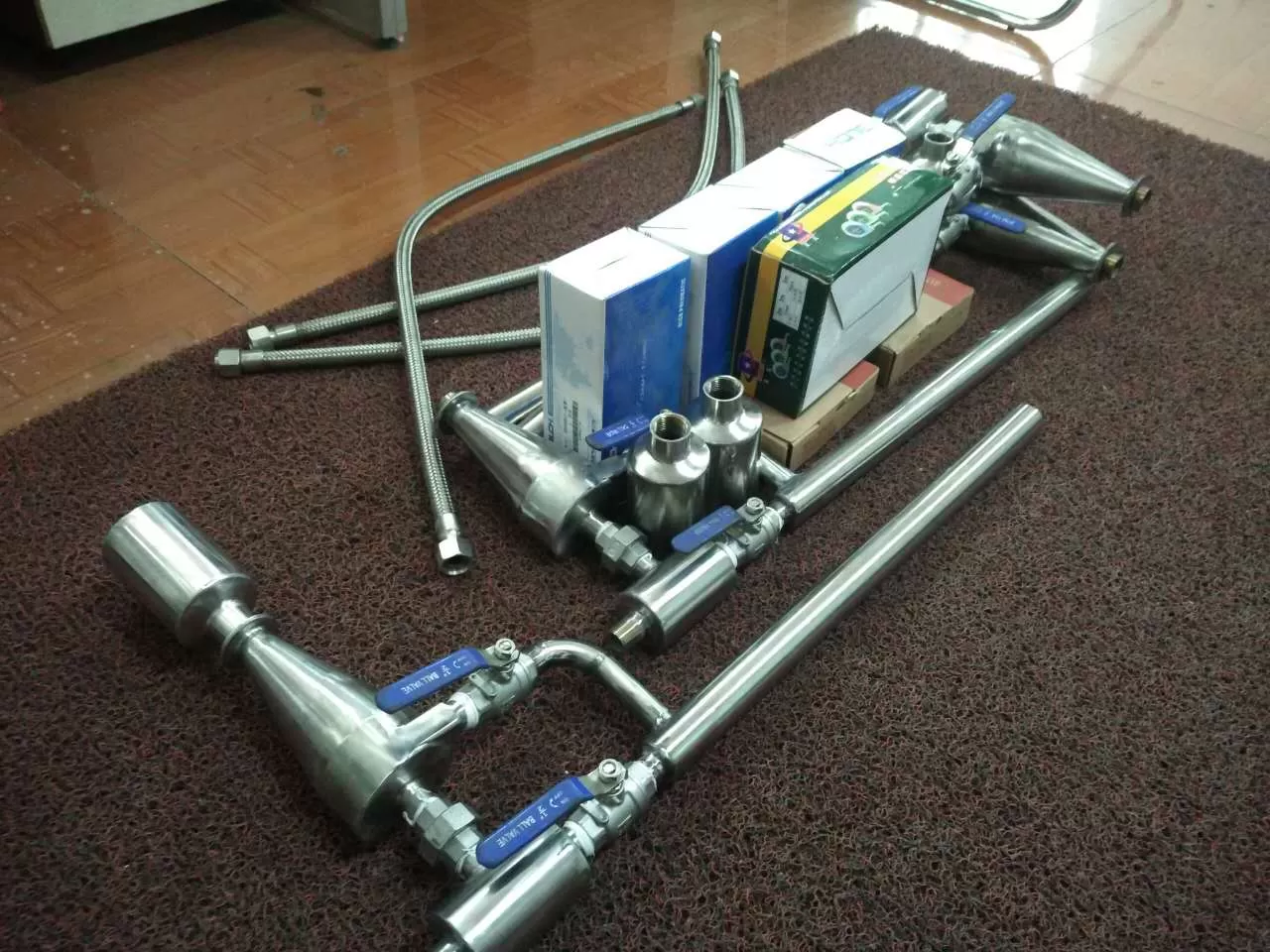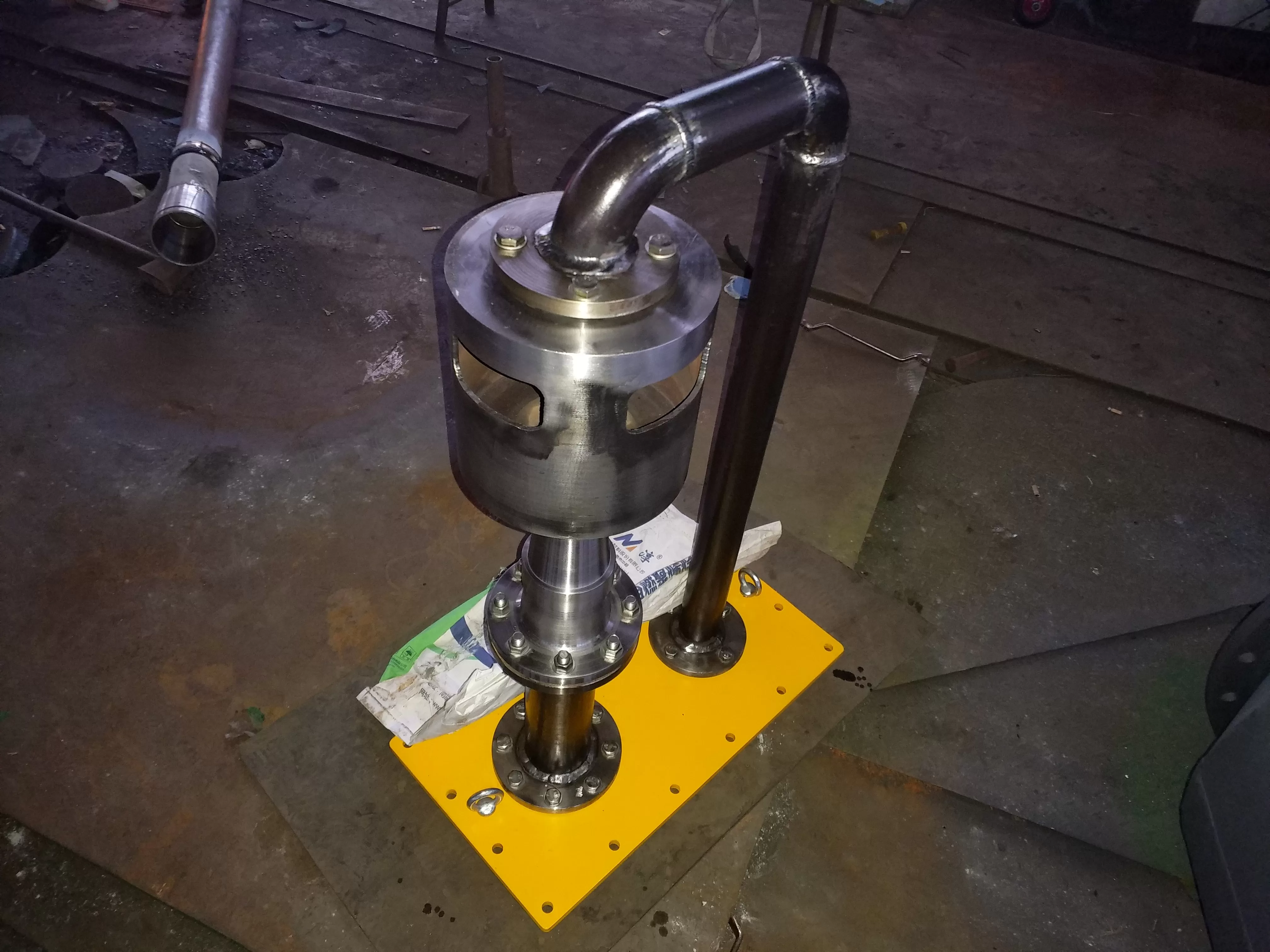Introduction to headless deaerator:
For the purpose of internal thermal power plants, the regular deaerator with deaerator head is commonly used, and its types include rotary membrane type, spray filler type, water spray pan type, etc; There are two installation types: vertical deaerator head and horizontal deaerator head. The deoxidation process is completed at the deaerator head, including the preliminary deoxidation at the rotary membrane (spray layer), which can remove most of the gas in the water, carry out - degree deoxidation at the lower packing layer or spray tray, and remove the residual gas in the water. With the continuous development of deoxygenation technology, built-in headless deaerator has begun to occupy a certain market share.
In the process of boiler feedwater treatment, deoxygenation is a non critical step. Oxygen is the main corrosive substance in the water supply system and boiler. Oxygen in the water supply should be quickly removed, otherwise it will corrode the water supply system and components of the boiler. Corrosion will produce iron oxide, which will enter the boiler, deposit or adhere to the boiler tube wall and heating surface, forming difficult to dissolve channels to poor heat transfer iron scale. Moreover, corrosion will cause pits on the inner wall of the pipeline and increase the resistance coefficient. When pipeline corrosion is severe, accidents may even occur- According to regulations, steam boilers with an evaporation capacity of 2 tons or more per hour and hot water boilers with a water temperature of 95 ℃ or more are required to undergo deoxygenation- In recent years, many boiler water treatment companies have been exploring high and economical methods for deoxygenation of warm water. Lianyungang Huaneng Electric Power Auxiliary Equipment Co., Ltd. has years of experience in designing and producing deaerators. Its design and manufacture of - head deaerators (also known as - type built-in - head deaerators, - head spray deaerators) adopts advanced design schemes and manufacturing processes, which is very --- compared with the standard deaerators in the same industry. Several existing and ongoing enterprises within the project have adopted the head deaerator technology, and all the enterprises that have been put into operation have achieved good operational results.
After being regulated by the inlet control valve, the main condensate (including supplementary water) from the low-pressure heater enters the deaerator and is combined with other drainage channels in the deaerator. It is then sprayed out through a nozzle or orifice tube to form an umbrella shaped water film check valve, which conducts combined heat and mass transfer with the heating steam from bottom to top. The feedwater quickly reaches saturation temperature under working pressure. At this point, the majority of dissolved oxygen and other gases in the water are basically resolved by the check valve, achieving the purpose of deoxygenation. Dissolved oxygen and other gases that precipitate from water continuously flow out of the deaerator along with the residual steam through the exhaust pipe. The high pressure heater drain that enters the deaerator will also have a portion of water flash vaporized as heating steam. After releasing heat, all heating steam is condensed into condensate, which flows out from the deaerator water outlet downwards. In order to maintain the saturation temperature of the water temperature inside the deaerator at working pressure, heating steam can be introduced into the deaerator through a reboiler. The deoxygenated water enters the high-pressure heater after being pressurized by the feedwater pump through the outlet pipe.
The headless deaerator is a horizontal container composed of a cylindrical body and two heads. Two saddle supports are used, with sliding supports on one side and fixed supports on the other. There are two inlet pipes arranged on the side of the cylinder. The upper part is equipped with main steam, secondary temperature measurement ports, exhaust ports, safety valve ports, and backup ports. The side is equipped with liquid level gauge ports, overflow ports (equipped with external overflow devices), and two outlet ports are arranged at the lower part. There are two boiling steam heating ports and one discharge port. The internal components mainly consist of a steam exhaust pipe device placed underwater, a pre heating strip for water inlet, and a steam water heater. There is a manhole device for repair.
-Headless deaerator structure - Description:
The tower deaerator designed and manufactured by the company can be divided into two types based on the inlet atomization method: using chemical rotary membrane components and integral constant speed nozzles.
-The type tower deaerator is mainly composed of a water supply tank, which contains components such as a steam separation device, a butterfly constant velocity nozzle, a steam water separation device, a throttling steam spray pipe, and an anti vortex device for water outlet. This type of deaerator has a compact structure, rapid heating, and effective deaeration. Two sets of steam injection pipes act on the water surface and underwater respectively. A large number of throttling nozzles are installed above the water surface steam injection pipe, corresponding to the upper rotary film pipe, allowing steam to directly interact with the rotary film water skirt; A blowing port is opened laterally to create a steady wind force on the water surface, which blows the residual oxygen gas remaining on the water surface out of the water tank. The other inlet of the steam main pipe is changed to enter from the lower part, and throttling technology is also used to maximize the supply of internal temperature in the water tank, ensuring even underwater steam injection and dynamic disturbance of surface steam, and sufficient deoxygenation.
Headless deaerator maintenance:
When the deaerator is out of service, it should be prevented from damage. The deaerator should be 删除lated and a flange cover (for water supply, steam, exhaust, etc.) should be installed on the general pipeline, or two shut-off valves should be installed on each connecting pipe. Deaerator disconnection. After the pressure inside the deaerator is released, the deaerator is disconnected and the manhole is opened. Wash the deaerator thoroughly to remove any possible corrosive substances. Carefully inspect safety valves, shut-off valves, etc., and apply anti rust oil. If the deaerator is installed in a dry boiler room, the manhole can be opened for ventilation to keep the deaerator dry.
Headless deaerator technology - for:
a. Equipment complete - grid - regulated head deaerator;
b. Saves construction costs, reduces the height of the deaeration room by 3-4 meters;
c. Low exhaust loss.
d. When the load variation range is between 10% and 110%, the oxygen content in the effluent can be maintained at -7% μ G/L;
e. Single container structure, system design is simple, chemical, avoids stress cracks, and is earthquake resistant and reliable;
f. - Lighter, with low operating vibration;
g. Adopting a rotary film type chemical design or a constant speed nozzle, rotating components, maintenance, and ensuring safety and reliability;
h. The diameter and interface design are flexible, facilitating transportation and installation layout.
Precautions for headless deaerator:
1. The nozzle should be installed after flushing the entire system.
2. When the nozzle is put into use, it should be confirmed that there is no air in the pipeline and only condensation water is filled, which can prevent water hammer from causing nozzle damage.
3. Do not start the deaerator when the water level is -1/4. When the condensate water level exceeds the specified value, the deaerator cannot reach the correct temperature and pressure, which can cause unstable startup.
4. Do not leave the nozzle fully open, and do not operate the unit during startup. When there is not enough air, there is a risk of rapid pressure drop. If the pressure is maintained at -, allow a slow increase in nozzle flow rate.
5. In order to maintain sufficient temperature inside the deaerator (in warm up state), it is recommended to close the exhaust valve of the deaerator. Note that at some times, the deaerator will be subjected to external vacuum pressure.
When the deaerator reaches the control value and the oxygen content is qualified, the exhaust valve can be adjusted to reduce steam loss to - low.
When it is found that the internal steam discharge of the deaerator is not smooth, the blowing steam pipe can be opened appropriately to accelerate the flow of steam above the water surface.
When the deaerator needs to be inspected internally, it should be confirmed that the deaerator has been emptied and has reached room temperature before opening the manhole to enter.
Introduction to the built-in nozzle of headless deaerator:
The key component of the disc nozzle is a balanced disc made of stainless steel material. These discs are sandwiched around and tightened with a lever. At the nozzle, there is a flow distributor installed with a small hole area and a dust collection area. There is a bottom adapter in the rear area, which includes an anti eddy current device. There are a certain number of centering rings in the surrounding area of the nozzle to prevent damage to the disc during transmission and installation and disassembly of the deaerator. Water enters the nozzle through the pipeline connecting the main condensate, and through the small hole between the flow distributor and the clamp, the main condensate enters the disc room. Due to the pressure difference between the nozzle and the steam space of the deaerator, the disc opens and the main condensate forms a water film. The tooth shaped design around the disc, with alternating water retaining films, creates water droplets. There are evenly distributed grooves around the periphery, which support the cartridge disc when subjected to external pressure.
2. Typical design nozzle parameters and -- curve-
a. The butterfly nozzle used by the company's deaerator consists of two opposing butterfly shaped spring element clamps (equivalent to two standard butterfly springs installed face-to-face). When the internal pressure of the nozzle increases, the butterfly shaped spring element undergoes bouncing and warping, and water sprays out from the gap of the clamp to form a water film. Sawtooth shaped knots at the junction of the nozzle break and disturb, forming small droplets of mist. As the load gradually increases, the pressure increases, the flow rate increases, and the flow rate increases. As a result, the force acting on the nozzle increases, causing the disc to overcome tension and move, resulting in an increase in the nozzle's cross-sectional area. Its designed operating temperature is 0-400 ℃, suitable for water and steam as media, with a nominal pressure difference of 0.05MPa.
Working principle of headless deaerator:
The condensed water enters the steam space of the deaerator from the constant velocity nozzle for preliminary deaeration, and then flows into the water space towards the outlet; The heated steam is uniformly arranged along the axial direction of the deaerator cylinder through the exhaust pipe. The heated steam is sent underwater into the deaerator through the exhaust pipe, combined with water for heating. At the same time, it disturbs the water flow and brings dissolved oxygen and other non condensable gases out of the water surface, achieving the purpose of deoxygenation of the condensate. The longer the process of water in the deaerator, the more effective it is in deoxygenating the water. Steam is sent from underwater, and the uncondensed heating steam (now saturated steam) carries non condensable gas and escapes from the water surface, flowing towards the exhaust area of the nozzle (the exhaust area around the nozzle is the unsaturated water film (fog) area). The uncondensed heating steam in the exhaust area condenses into water, and the non condensable gas is discharged from the exhaust port. In the process of non condensable gas flowing towards the exhaust outlet, under a fixed water volume, the larger the diameter of the deaerator cylinder, the smaller the partial pressure of non condensable gas in the vapor space. This can control the diffusion of non condensable gas on the liquid surface and avoid the occurrence of secondary dissolved oxygen. Therefore, the deaerator cylinder adopts a large diameter of -.
Operating instructions for headless deaerator:
When starting the water supply system and deaerator, it is necessary to check the correct installation of all accessories and pipe flanges. If the equipment adopts chemical hand anti-corrosion, during operation, the deaerator should be ventilated and discharged for a certain period of time. When using preservatives in bags, they should be removed when starting the deaerator. Then, check if there are any remaining tools inside the deaerator, such as nuts, bolts, etc., and remove them. Start and clean the deaerator, tighten the fasteners. Confirm that the sliding support can freely expand during the normal operation of the deaerator. All accessories on the deaerator should be installed correctly and in the correct on/off state. All pipelines entering and exiting the deaerator should be cleaned and stress collected. When the deaerator reaches the required temperature and pressure, water should be injected into the deaerator by slowly opening the condensate supply valve. The boiler feedwater can be extracted from the deaerator during the water supply stage, but the water supply speed must be much higher than the feedwater extraction speed. Do not pump out feedwater to the boiler until the water level in the water tank has risen to the positive level of the water tank. If the heated condensate does not have a corresponding amount of heating steam, it will cause a change in pressure inside the deaerator. If the pressure inside the deaerator drops naturally, the corresponding condensate should also decrease. If the pressure inside the deaerator rises, the corresponding steam supply should be reduced, and the volume of water in the reactor is still small because the outlet is open. After heating to the operating temperature and pressure, while maintaining this pressure and temperature, the deaerator is filled with water through a nozzle to the positive water level.
Headless deaerator model specifications and technical parameters
-Headless deaerator nozzle parameters:
| 喷嘴型号 | 设计项目 | 内容 |
| PZ(DX)-300 | 额定流量 | 150~350t/h |
| 恒定流速 | 12.5m/s(额定流量的10%~110%范围内) |
| -大过滤直径 | 1mm |
| PZ(DX)-600 | 额定流量 | 350~700t/h |
| 恒定流量 | 15m/s(额定流量的10%~110%范围内) |
| -大过滤直径 | 1mm |
| PZ(DX)-1200 | 额定流量 | 800~1320t/h |
| 恒定流量 | 16m/s(额定流量的10%~110%范围内) |
| -大过滤直径 | 1mm
|
WGCM型-头除氧器技术参数:
压力式(-头,内置式,喷雾式除氧器)WGCM型运行压力0.1~0.98MPa:
| 型号 | 除氧器额定出力t/h | 水箱有-容积m³ | 工作压力Mpa | 工作温度℃ | 设备净-kg |
| WGCM220/50 | 220 | 50 | 0.5 | 158 | 22866 |
| WGCM250/60 | 250 | 60 | 25260 |
| WGCM300/70 | 300 | 70 | 29292 |
| WGCM350/70 | 350 | 70 | 30756 |
| WGCM440/100 | 440 | 100 | 48166 |
| WGCM 600/140 | 600 | 140 | 62560 |
| WGCM680/140 | 680 | 140 | 63895 |
| WGCM710/140 | 710 | 140 | 65062 |
| WGCM1080/200 | 1080 | 200 | 92220 |
WDCM型-头除氧器技术参数:
大气式(-头,内置式,喷雾式除氧器)WDCM型运行压力0.02~0.08MPa:
| 型号 | 除氧器额定出力t/h | 水箱有-容积m³ | 工作压力Mpa | 工作温度℃ | 设备净-kg |
| WDCM10/5 | 10 | 5 | 0.02 | 104 | 2680 |
| WDCM20/10 | 20 | 10 | 3570 |
| WDCM35/20 | 35 | 20 | 8070 |
| WDCM40/20 | 40 | 20 | 8320 |
| WDCM50/25 | 50 | 25 | 8630 |
| WDCM75/35 | 75 | 35 | 9700 |
| WDCM85/38 | 85 | 35 | 9900 |
| WDCM130/40 | 130 | 40 | 14538 |
| WDCM150/50 | 150 | 50 | 18060 |
| WDCM180/60 | 180 | 60 | 22300 |
| WDCM220/60 | 220 | 60 | 23856 |
| WDCM250/60 | 250 | 60 | 24800 |
| WDCM300/70 | 300 | 70 | 27705 |
| WDCM350/70 | 350 | 70 | 28952 |
注意:以上技术规格参数仅供参考以实际设计为主。
